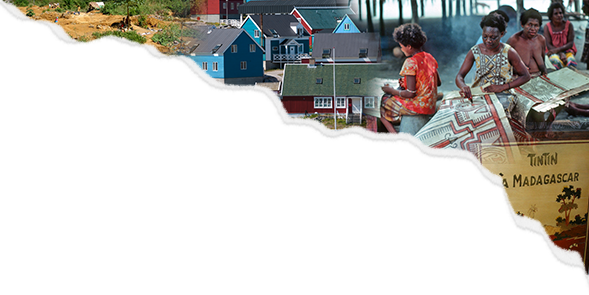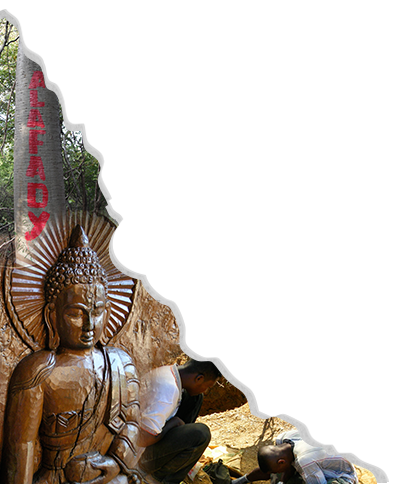In this contribution, Karoline Guelke discusses how studies of tourism can help students overcome common misperceptions of other cultures as static and unchanging.
During one of my first years of teaching, a student came up to me after a lecture about culture. He told me that he strongly disagreed with the notion that people were affected by their culture; rather, he had always considered himself to be rebellious and consciously acting against social norms. His comments reflect a belief I have seen frequently among students: people elsewhere are governed by culture, whereas I am an independent agent acting according to my personal preferences. (Later in the semester, the student reflected that maybe his rebellion was influenced by Canadian cultural ideas about individuality and masculinity, a valuable insight that has not been as common in my classes as I hoped.) Another common misconception is the view of other cultures as static and unchanging. Even though textbooks now emphasize agency and the dynamic aspects of culture much more, many students still hold very binary ideas of the timeless traditional versus the modern and dynamic, where they locate themselves.
In order to convey a deeper understanding of culture in undergraduate teaching, I believe it is important to address these misconceptions repeatedly and to provide a range of examples that encourage students to broaden their perspectives. There are a few ways in which the topic of tourism has provided an engaging subject to examine and challenge simplistic notions of culture, while also allowing students to connect personal experiences. My research about tourism development was conducted pre-pandemic in 2014 – 2015 in Ollantaytambo, a small community located between the city of Cusco and the famous Inca site Machu Picchu.
Not unlike tourists, many students arrive in an undergraduate anthropology class with an interest in foreign people and places; however, recognizing and reflecting on their own culture may not be a challenge they expect. In Tourism Studies, much attention has been given to the impact of tourist presence and  the critique of the “tourist gaze” (Urry 1990). The now classic film Cannibal Tours (O’Rourke 1988), depicting interactions between European and American tourists and local people in Papua New Guinea, provides excellent illustrations of tourist encounters that unsettle this notion and clearly position tourism as a specific cultural practice. Similarly, the newer film Framing the Other (Kok and Timmers 2012) shows the encounter between Dutch tourists and members of the Mursi tribe in Ethiopia, emphasizing the practice of photography and its impacts. Given the prominent role photography plays in students’ lives today, this topic has been effective for eliciting discussions in the classroom and prompting students to identify and analyze their own cultural behaviours.
the critique of the “tourist gaze” (Urry 1990). The now classic film Cannibal Tours (O’Rourke 1988), depicting interactions between European and American tourists and local people in Papua New Guinea, provides excellent illustrations of tourist encounters that unsettle this notion and clearly position tourism as a specific cultural practice. Similarly, the newer film Framing the Other (Kok and Timmers 2012) shows the encounter between Dutch tourists and members of the Mursi tribe in Ethiopia, emphasizing the practice of photography and its impacts. Given the prominent role photography plays in students’ lives today, this topic has been effective for eliciting discussions in the classroom and prompting students to identify and analyze their own cultural behaviours.
The binary between traditional and modern is a common trope in tourist discourse about culture. Like many other rural areas in the global South, Ollantaytambo has widely been advertised as an authentic village where visitors can “step back in time.” An American backpacker I interviewed commented:
“Yeah, we wanted to experience that here in Peru.. the authentic culture of people who live without all that stuff – technology and that. So it’s disappointing when you come into town and you see all those pizza places and visa signs and, well (laughs), but then again, we do like a good internet connection!”
Visitors’ expectations are met in different ways. Even though people in Ollantaytambo stopped using thatched roofs in favour of more durable tile and metal decades ago, they started using thatched coverings over market stalls because “tourists like them.” Drawing on the discussion of different types of authenticity (e.g. Wang, 1999) can help unsettle the mental binary between traditional versus modern and “fake” versus real. Students are usually critical of tourism and focus on the issue of cultural loss. They have no trouble relating to Dean MacCannell’s concept of “staged authenticity” (1976), which implies a true original. Here it is useful to offer counter examples that show culture as dynamic and people as active agents, reflected in Erik Cohen’s concept of “emergent authenticity” (1988). A classic example are the dances on Bali that were invented for tourists in the 1950s and 60s; over time, these “fake” dances took on meaning for local people and have since been integrated into the cultural repertoire. In Peru, spiritual ceremonies such as offerings to the earth (despachos) are frequently performed for tourists. Alberto, a local tour guide, told me that he never practiced such rituals when he was young, yet after learning to do despachos for tourists, he became interested in his own traditions. Gradually he started performing some of these rituals with his family, showing how tourism can lead to greater validation and revival of cultural practices.
traditional versus modern and “fake” versus real. Students are usually critical of tourism and focus on the issue of cultural loss. They have no trouble relating to Dean MacCannell’s concept of “staged authenticity” (1976), which implies a true original. Here it is useful to offer counter examples that show culture as dynamic and people as active agents, reflected in Erik Cohen’s concept of “emergent authenticity” (1988). A classic example are the dances on Bali that were invented for tourists in the 1950s and 60s; over time, these “fake” dances took on meaning for local people and have since been integrated into the cultural repertoire. In Peru, spiritual ceremonies such as offerings to the earth (despachos) are frequently performed for tourists. Alberto, a local tour guide, told me that he never practiced such rituals when he was young, yet after learning to do despachos for tourists, he became interested in his own traditions. Gradually he started performing some of these rituals with his family, showing how tourism can lead to greater validation and revival of cultural practices.
Related to this, I have used an assignment that asks students to share a travel photo and a short analysis drawing on different types of authenticity. This functioned well for helping students see complexities and different possible interpretations and also allowed them to share something personal. Using online learning systems, this has worked well for both online and on-campus classes. In my book, I also discuss different forms of inequality in the context of tourism. Discourse analysis is important for analyzing broader politics of representation. A tourist destination is not just a physical location; it is continuously constructed through stories. Controlling the dominant representations is a way of wielding power, and postcolonial critiques have highlighted the persistent representations of the Global South as unchanged and uncivilized. Another one of my assignments asks students to analyze online text and images of a tourist site, whether a city, region, monument, or natural attraction, which has prompted deeper reflections of historical variables and power inequalities.
As we are now in the second year of the pandemic and face violent conflicts, travel may seem less relevant and even more privileged than before. Yet it is important to critically engage with tourism, which is after all a cousin of anthropology, equally rooted in colonialism and imperialism. In my experience the subject can also facilitate student engagement and a more in-depth understanding of the complexities of culture.
Works cited
Cohen, Erik. 1988. “Authenticity and Commoditization in Tourism.’ Annals of Tourism Research 15:371-386.
Kok, Ilja, and Willem Timmers, directors. 2012. Framing the Other. Breda: Copper Views Film
Productions.
MacCannell, Dean. 1976. The Tourist: A New Theory of the Leisure Class. New York: Schocken
Books.
O’Rourke, Dennis, director. 1988. Cannibal Tours. Australia: Dennis O’Rourke and Laurence J.
Henderson.
Urry, John. 1990. The Tourist Gaze: Leisure and Travel in Contemporary Societies. London:
Sage Publications.
Wang, Ning. 1999. “Rethinking Authenticity in Tourism Experience.” Annals of Tourism
Research 26(2):349-370.
Dr. Karoline Guelke is a Sessional Lecturer in the Departments of Gender Studies and Anthropology at the University of Victoria. She is the author of The Living Inca Town: Tourist Encounters in the Peruvian Andes, in the Teaching Culture series.



